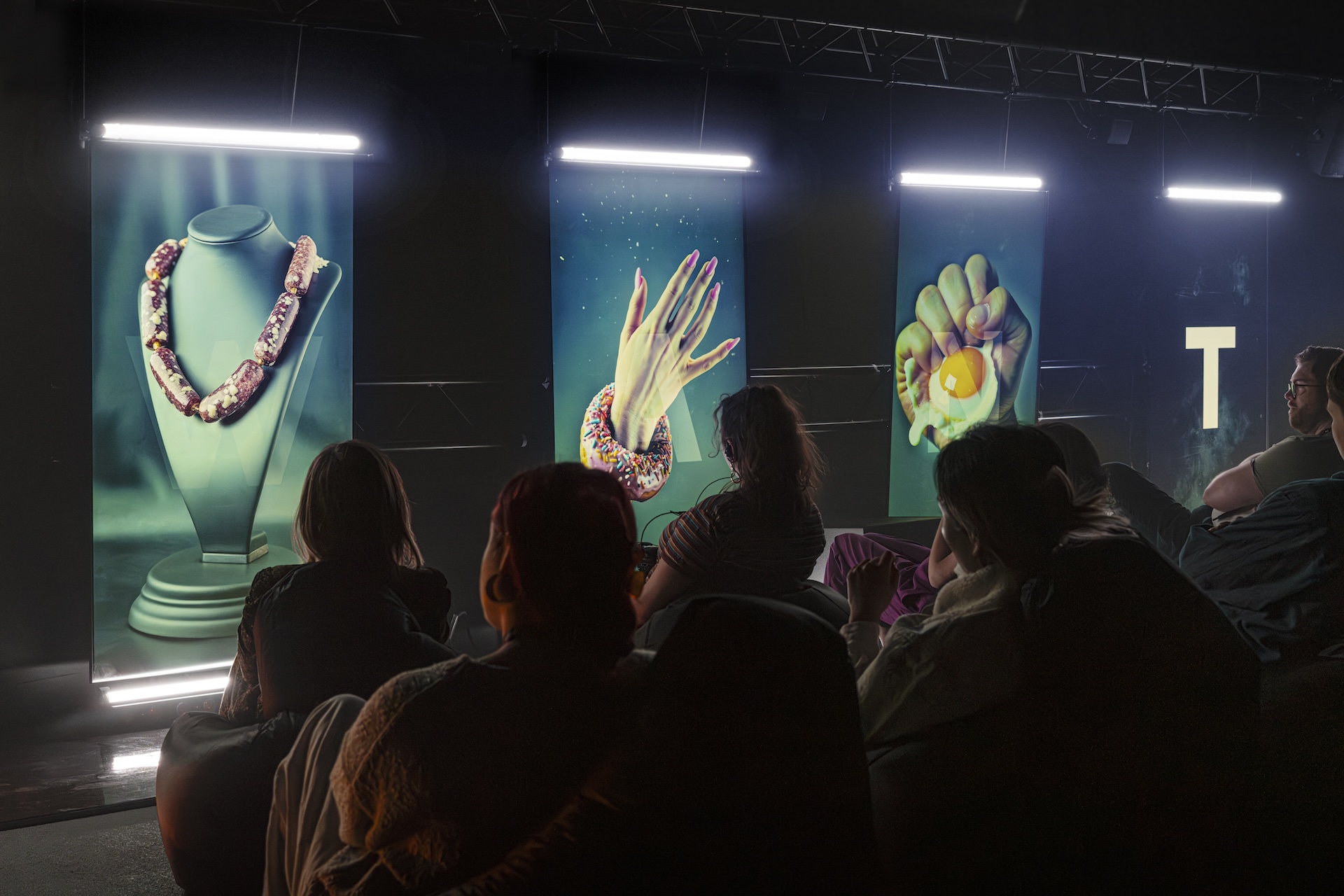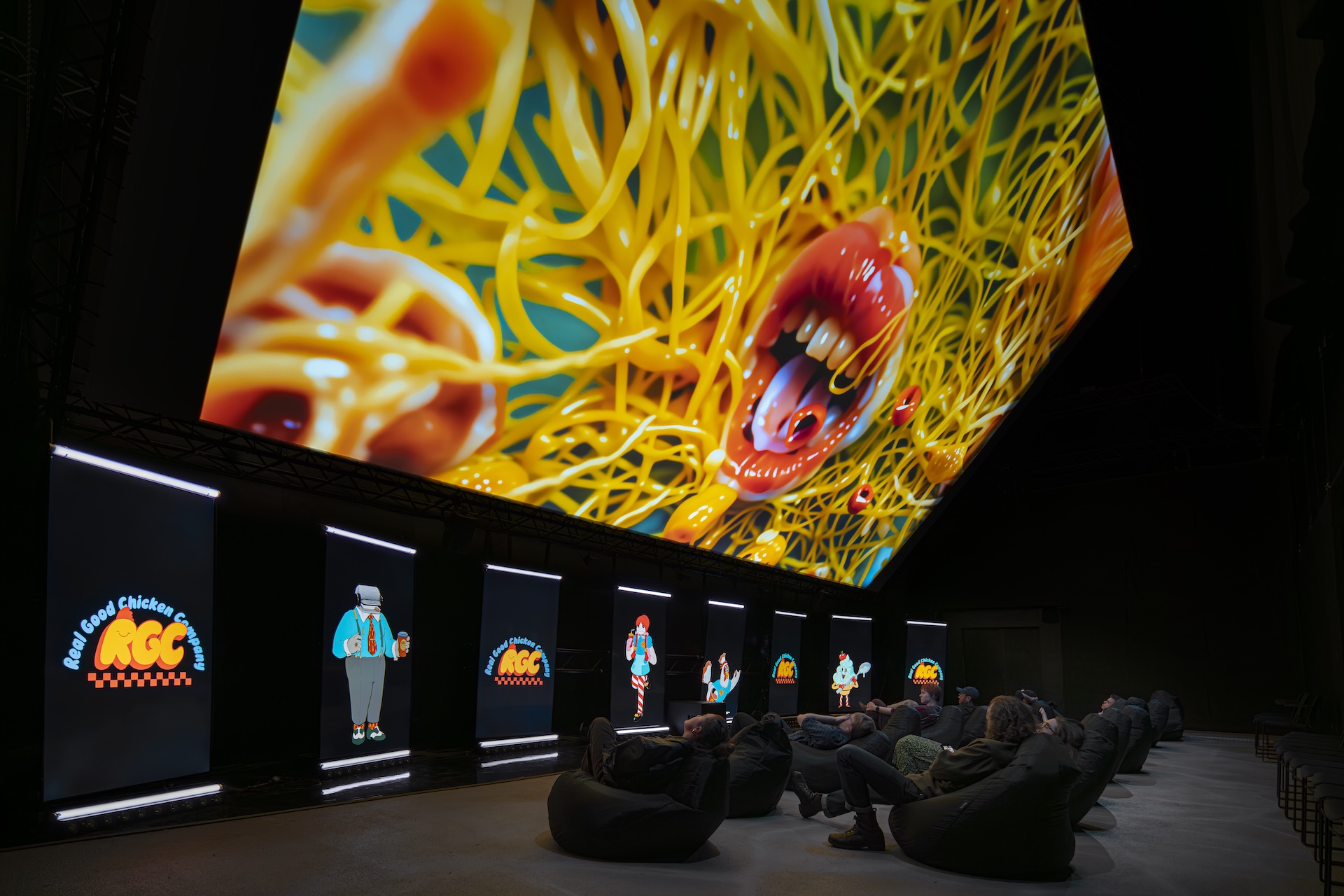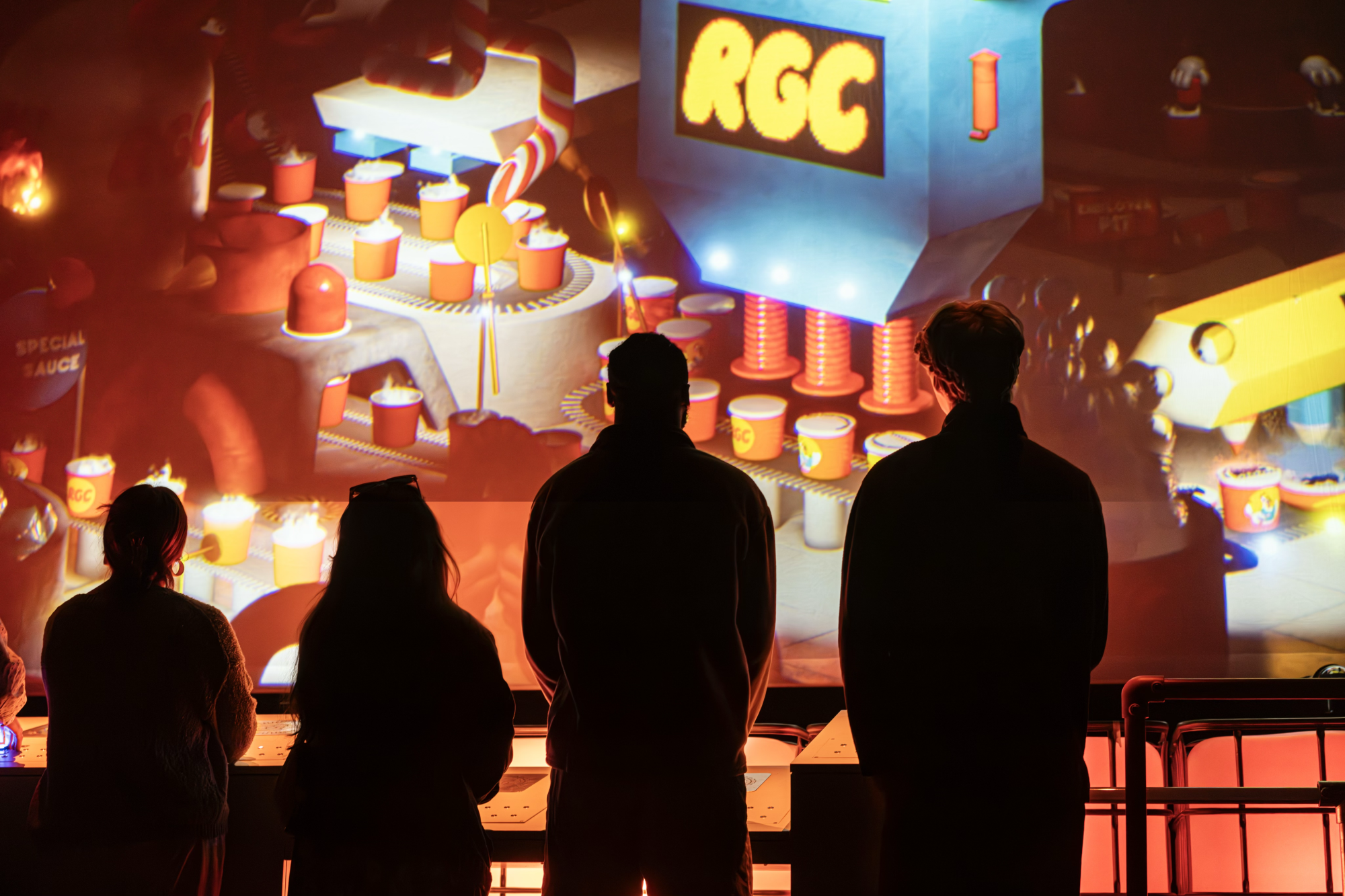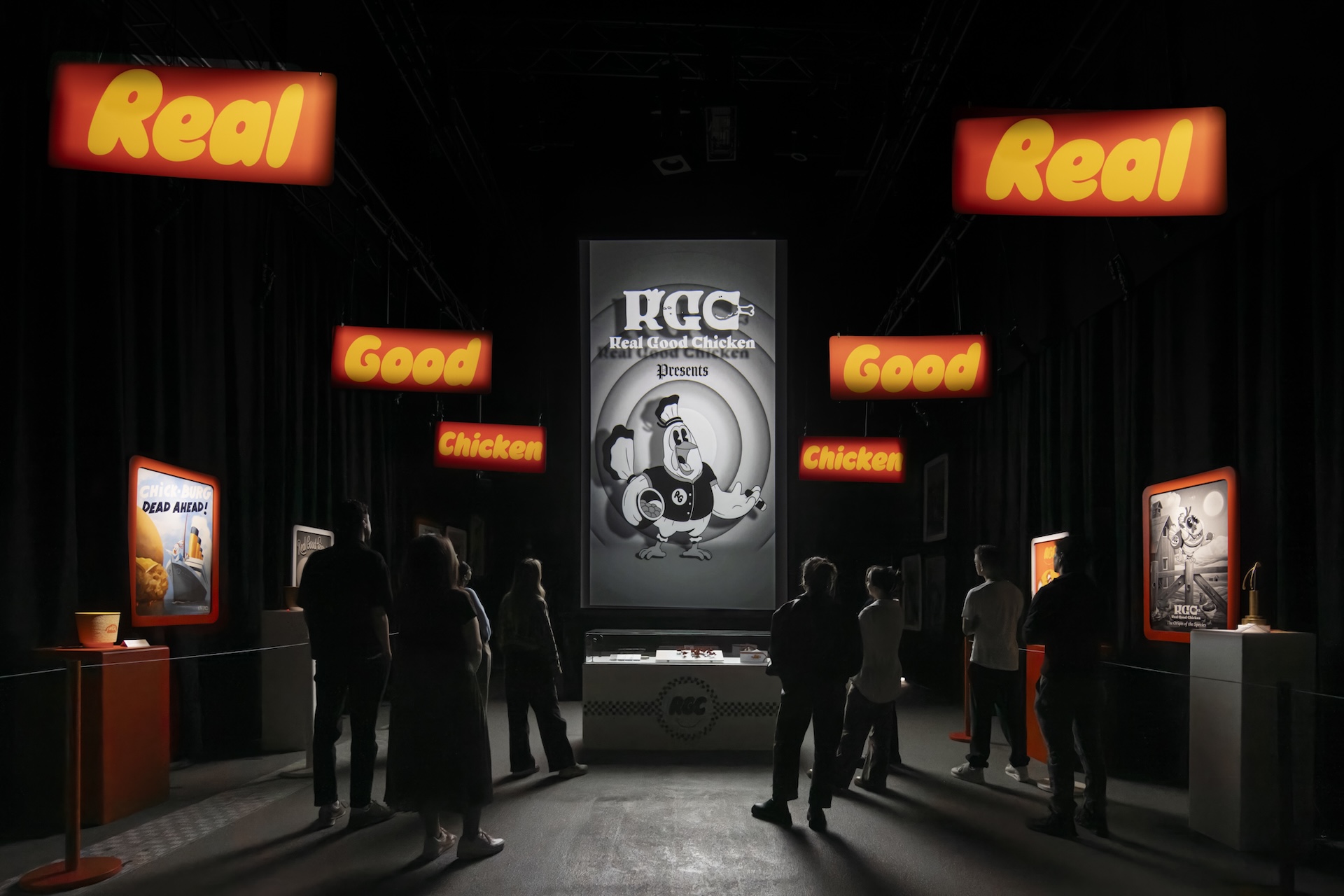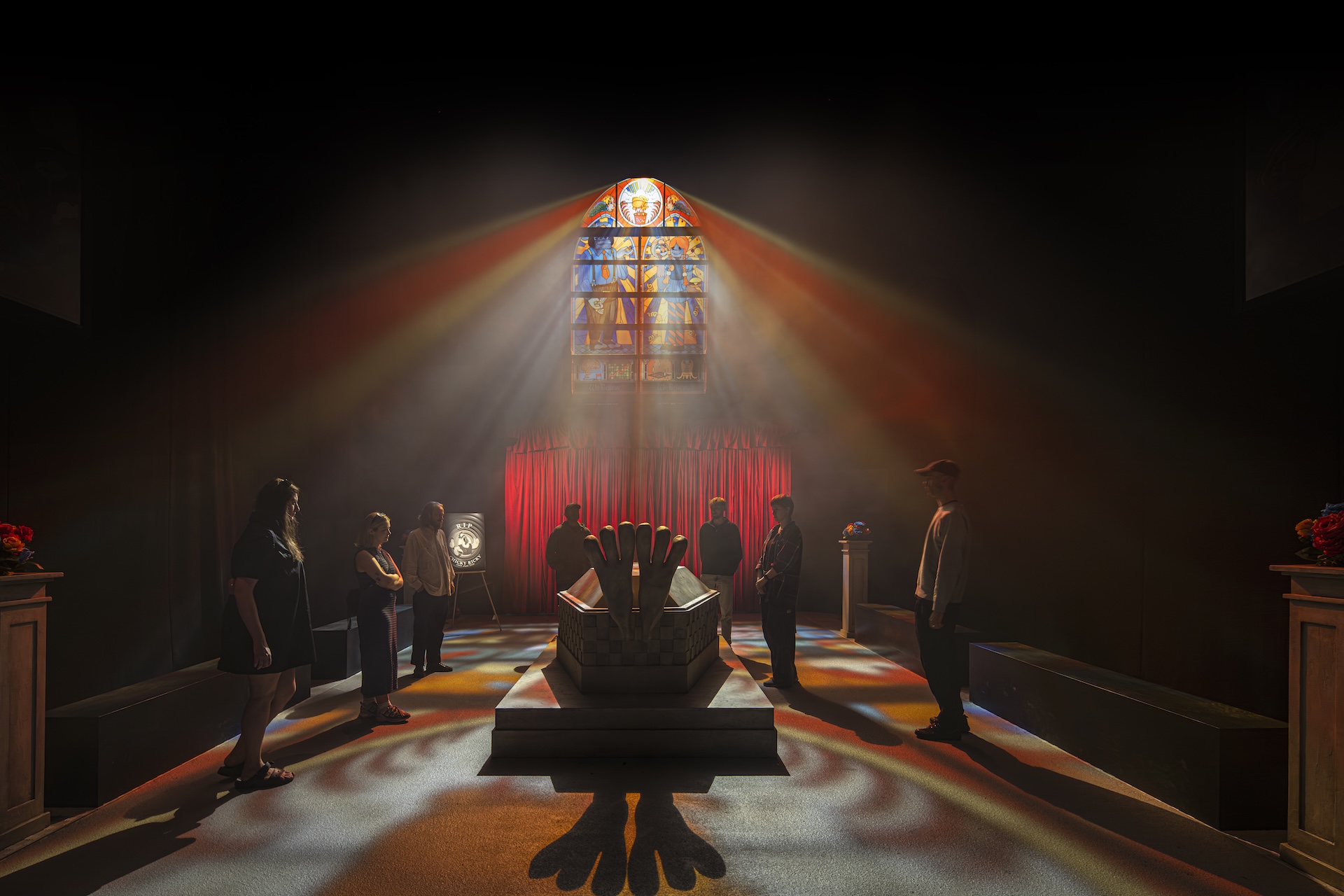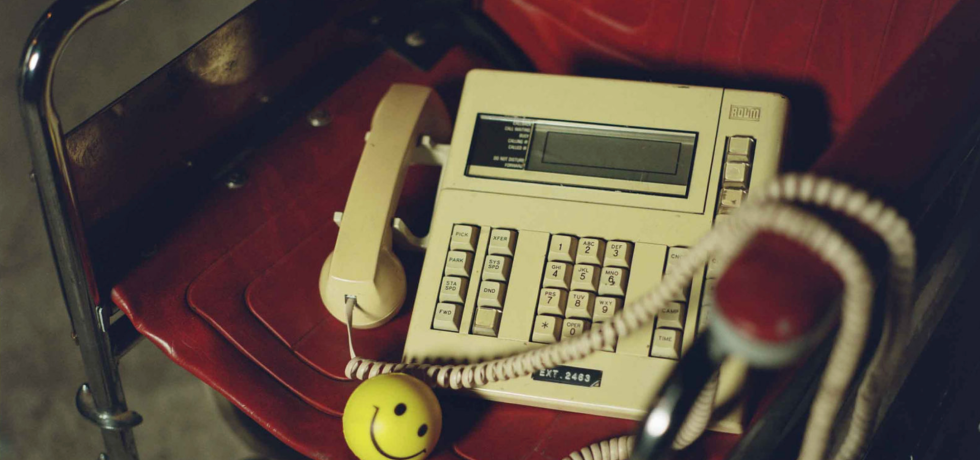Sweet Dreams
“This isn’t the food business, Ricky. This is the desire business. We’re manufacturing dreams!”
In Sweet Dreams, a massive installation created by Britain’s Marshmallow Laser Feast that was on view for two months at Factory International in Manchester, visitors joined the Real Good Chicken company and its mascot, Chicky Ricky, at a time when tastes are changing. The company’s future, and Ricky’s, hangs in the balance. Ricky is forced to engage with the strange, modern world of food and try to find a new place within it. To some extent, we’re all on this path, trying to navigate an increasingly loud and extreme landscape where food is becoming more processed, more expensive and more excessive.How we feel about food today speaks to a wider sense – and a deepening suspicion – that modern life is artificial, unsustainable, and not giving us what we need. But there are no easy answers. Whatever choice some of us might have is complicated, and many have no choice at all. When it comes to food, large-scale co-operatives and multinationals shape our desires as well as our realities. We’ve been consuming other people’s dreams so long it’s hard to know what our own wishes are. Like Ricky, we’re all on the conveyor belt.
Commissioned by Factory International, developed and funded by the British Film Institute’s Filmmaking Fund and created in collaboration with award-winning writer and former chef Simon Wroe, Sweet Dreams was the second collaboration between Factory International and Marshmallow Laser Feast following Dream, a live online theater show set in the forest of Shakespeare’s A Midsummer Night’s Dream. Among MLF’s earlier creations was Evolver, which was honored in the 2023 Breakthroughs in Storytelling Awards.
Marshmallow Laser Feast is a London-based experiential artist collective that collaborates with specialists in all disciplines—from coders to poets, chemists to ventriloquists, brands to institutions. The group tells stories that untangle, entangle and flavor our reality, blurring the lines between art, immersive experiences, XR and film. Grounded in research, its work is designed to expose, explore and expand our relationship with the living world. Its studio is in Hackney Wick, a one-time industrial zone in East London that has become a haven for quirky cafés, craft breweries, hip bars and artist studios.
Sweet Dreams was directed by Robin McNicholas, co-founder and creative director of Marshmallow Laser Feast, and written by Simon Wroe, former chef and author of the novels Chop Chop and Here Comes Trouble. As a journalist, Wroe has written for The Guardian, The Economist, The Times and The Independent, among others. Chicky Ricky and other cartoon animations were created by the French artist McBess (Matthieu Bessudo).
IN THE MEDIA
“Sweet Dreams is centred on the story of fictional fast food brand the Real Good Chicken Company and its long-standing mascot Chicky Ricky, a cartoon character drawn by French artist McBess and voiced by actor and comedian Munya Chawawa. The brand is facing a crisis as customers turn away from cheap fast food in search of healthier and more sustainable options. Spread over several rooms in one of Aviva Studios’ vast spaces, visitors to Sweet Dreams are taken on a journey through the company’s history, where we learn of the various corporate crises it has faced. . . .
“As a piece of corporate satire, the whole experience is painfully on the nose, taking in how brands use mascots to beguile kids despite health concerns — ‘My smiley face says, “it’s alright, you can eat this!”’ chirps Chicky Ricky — and the deeper problems inherent in capitalism. . . . An extra level of nuance is brought to the piece by the discovery that you can buy various pieces of Real Good Chicken Company merch in the gallery foyer. So while you might emerge blinking from the installation in despair at the manipulative nature of corporations, brands, and marketers, it’s hard to resist going on to spread the brand’s message yourself via a beautifully designed tote bag.”
“‘I was in Tbilisi, Georgia where I saw a cartoon mascot of a rooster running with a roast chicken on a plate,’ recalls Robin McNicholas, the director of immersive exhibition specialists Marshmallow Laser Feast (MLF). ‘And I remember thinking, it’s so weird, like celebrating cannibalism. How is this possibly a tantalizing offer to buy something inside this particular takeaway? But at the same time, it says a lot about who we are and our relationship to food.’“That one image helped spark a ten-year journey to MLF’s new project, Sweet Dreams, in collaboration with Factory International, with funding and development from the BFI. . . . It’s a surreal, interactive experience bursting with vibrant pop-culture art and animation. . . .
“Even if the project wants to take us inside the industry’s practices, avoiding an overtly accusatory stance towards consumers is clearly by design. ‘It’s really about realising that our relationship to food has a buffer, and that buffer is often a smiling cartoon that deflects our sense of what the ingredients are,’ observes McNicholas. ‘But certainly, it gets the emotions and the hunger primed.’”
“Where in the world is Ronald McDonald? There was a time when the indisputably terrifying burger mascot was everywhere, his bright yellow jumpsuit and shocking red wig ubiquitous at children’s birthday parties and in TV adverts. Yet outside of branding for the Ronald McDonald House Charities – and our occasional nightmares – the world’s most famous clown has all but disappeared. It’s a pattern that’s been replicated all over the supermarket aisle. . . .“Sweet Dreams . . . tackles this very boom in vanished icons. Told from the perspective of a panicked cartoon mascot named Chicky Ricky (and voiced by the comedian Munya Chawawa), the show revolves around a dying fast-food empire trying to find new ways to market themselves to the public.
“Robin McNicholas, creative director of Marshmallow Laser Feast, says that the appeal of cartoon mascots lies in their direct link to our childhoods. ‘If I close my eyes, I can see the friendly Coco Pops mascot, Coco the Monkey, and hear the jingle, and I immediately want a bowl of Coco Pops cereal,’ he tells me. ‘A lot of these characters were created to put us in an almost childlike state, they’re always smiling and reassuring, as though to say, “It’s OK, you can eat this, open wide.”’

